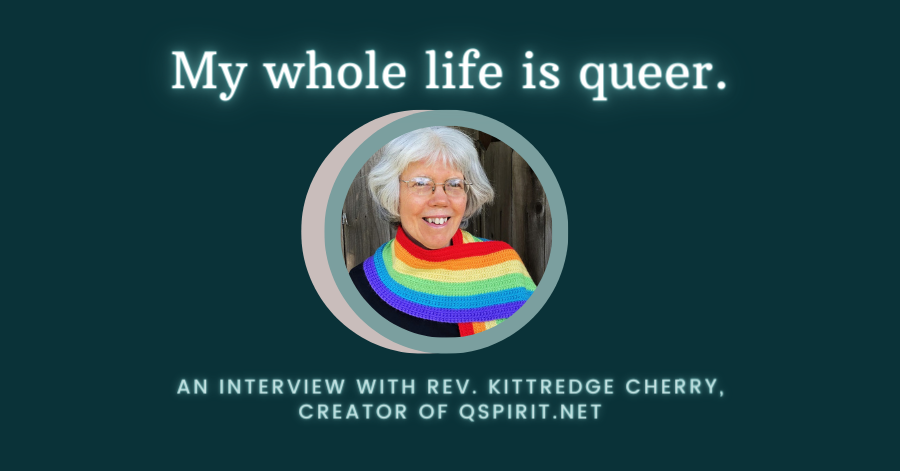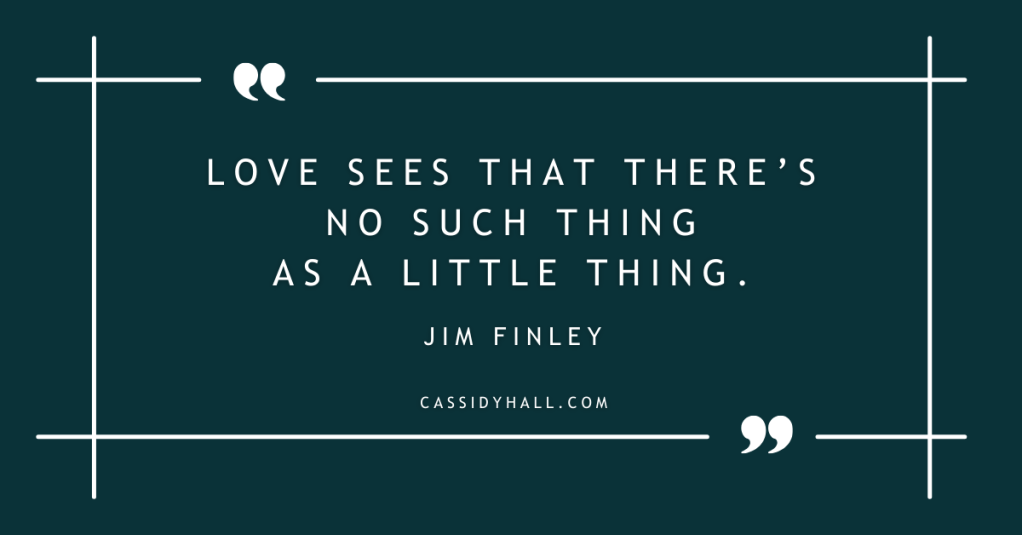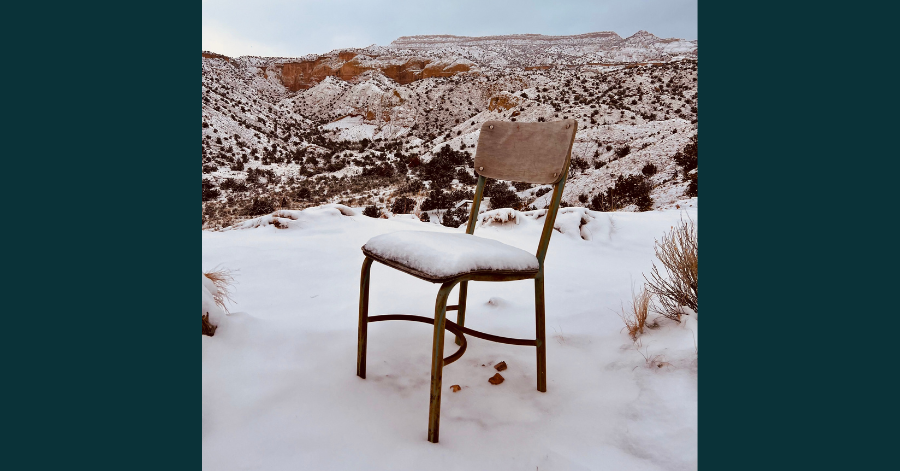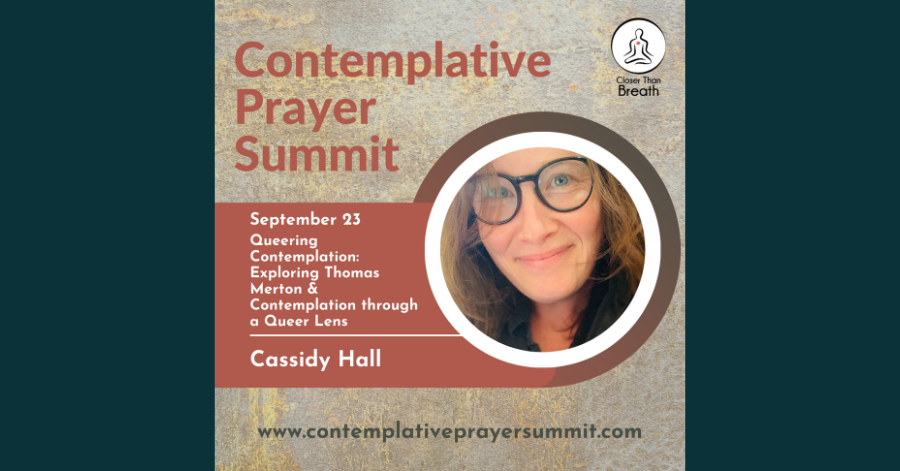A portion of this interview will be included in my forthcoming book, Queering Contemplation: Finding Queerness in the Roots and Future of Contemplative Spirituality.
Have you ever wondered about the voice behind the website qspirit.net? I first came across Kitt’s work when I was a weary queer soul in my twenties, wondering why all the saints and monastics I had heard of and most read were largely cis straight (presenting) men, and a handful of women. During a lonely late-night google search, I came cross Kitt’s work on qspirit.net, where she writes about LGBTQIA+ saints, monks, nuns, and shares the work of LGBTQIA+ Christian authors, affirming the many ways in which LGBTQIA+ spirituality thrives in a variety of spiritual life’s expressions. In a conversation I had with Kitt, she shared about her work and her research of the desert monastics. I asked her who some of her favorite desert dwellers of third- and fourth-century Christianity were. Here’s what she told me.
Cassidy Hall: How do you experience or encounter “queer” in your own life, work, and spirituality?
Kittredge Cherry: In some ways my whole life is queer. But sometimes “queer” feels too general to me, and I prefer to identify as lesbian or LGBTQ+. I knew I was a lesbian before I knew that God was real. I was raised in a mostly secular family. My father’s death when I was in my mid-20s led me to seek spiritual answers at church. I felt God reach out to me, just as I am, lesbian and all. When I experienced the reality of God, I had to follow the call and naturally the issue of LGBTQ people in the church became a part of my journey. I was ordained by Metropolitan Community Churches, the only Christian denomination that ordained lesbians and gays back then. I ministered at MCC San Francisco during the AIDS crisis of the 1980s, then served as MCC’s National Ecumenical Officer, advocating for LGBTQ rights at the World Council of Churches and U.S. National Council of Churches.
“Queer” has broader meanings beyond just LGBTQ+ identities. To be queer is to disrupt assumptions, question authority, value the marginalized, and embrace alternatives to mainstream consumerism. It was queer when hermits left society and found God in the desert, and it is queer when I seek direct connection with God in the mini-wilderness my own overgrown backyard.
Chronic Fatigue Syndrome forced me into a quieter life that reminds me of the contemplative queer saints, especially Julian of Norwich. It’s not known if Julian herself was queer, but some of her ideas were. She wrote about “Mother Jesus” and stated, “As truly as God is our Father, so truly is God our Mother.” Julian lived a solitary life in a cell attached to a church, but it had windows that let her watch church services and counsel and pray over the people who came to her. My computer screen is my window on the world and functions in much the same way.
Cassidy Hall: Your work on Q Spirit has been a balm to my weary queer soul hungry for the elevation of LGBTQIA+ saints. What was the origin of the project and what are you most passionate about sharing there?
Kittredge Cherry: I was laser-focused on Jesus in the first years of my online ministry, when I founded JesusInLove.org and wrote my “Jesus in Love” novels and “Art That Dares: Gay Jesus, Woman Christ, and More.” Some readers urged me to branch out by writing about saints too. They told me that they couldn’t relate to Jesus, but they liked the idea that LGBTQ people were among his followers. I launched my LGBTQ Saints series in 2009 and it quickly grew into the most popular content on my blog. I became an independent historian who applied journalistic skills to the past instead of reporting on current events. The queer saints fascinated me more and more as I dug into them. I expanded to create Qspirit.net.
My spiritual journey began with being raised in a mostly secular family, so I did not grow up with saints. Still I have an inexplicable affinity for the folk devotion to saints as expressed from the grassroots by ordinary people. When I read how much Q Spirit means to you and others, it inspires me to continue despite constant verbal attacks on my work from anti-LGBTQ conservatives who use Christianity to justify discrimination against queer people.
Cassidy Hall: The desert of 3rd and 4th century Christianity was a place of origin for Christian monasticism, do you think it was also a profound place of expressing the queerness of Christianity itself? How so?
Kittredge Cherry: The Egyptian desert definitely nurtured queer spirituality along with overall Christian monasticism around the third century. The desert was considered barren, but for queer ascetics it was fertile ground. Separate from the pressures of mainstream society, the desert let them break free from heterosexual norms and conventional gender binaries to follow God’s call. Even queer saints from other times and places often found isolated, desert-like places to live as holy hermits.
As part of my LGBTQ Saints series, I did research to identify every historical saint who ever crossed or blurred gender lines by adopting behaviors or identities that were different from what society expected based on their gender assigned at birth. I was surprised by how many of them retreated to live as hermits in the desert. The most common pattern was experienced by people who were assigned female at birth: They rejected heterosexual marriage, cut their hair, put on male clothing, changed their names and identities to male and became desert ascetics. In most cases their biological sex was discovered by shocked communities after they died.
Cassidy Hall: Who are some of your favorite LGBTQIA+ desert fathers/mothers/dwellers and what do you think they can teach us today? Do you think the language of desert “fathers/mothers” is limiting?
Kittredge Cherry: The phrases “desert fathers” and “desert mothers” are too limiting for me because they reinforce the male/female dualism and use biological parenting as the only model for spiritual mentorship. I prefer to use “desert elders.” Often I simply call them hermits, ascetics, monks or nuns. Here are a few of my LGBTQ desert elders:
Symeon the Holy Fool of Emesa and John of Edessa joined a monastery together in sixth-century Syria and were united in the “adelphopoiesis” ceremony — the “brother-making” ritual that historian John Boswell calls a “same-sex union.” Then they became desert hermits and shared a life together in the wilderness with all the emotional intensity of a same-sex couple for 29 years. They parted when Symeon left his long-time companion to live in the city as a “holy fool.” We can learn a lot from the way that holy fools deliberately challenged social norms for spiritual purposes. Symeon and John also show that same-sex couples can be blessed by God and the church.
Marinos / Marina the Monk has been called a patron saint of transgender parenting. Assigned female at birth, Marina adopted the name Marinos and entered a monastery as a man in fifth-century Lebanon. Marinos embraced a male identity from that point onward, even after being falsely accused of fathering a child. He adopted the boy and raised him as his own son. Like other cross-dressing or transgender saints, Marinos teaches us to see the divine in all people, regardless of gender identity or sexual orientation. I especially value Marinos because this saint is also a loving role model for queer parenting and for integrating parenthood into a contemplative spiritual journey.
Like this content? Click below to purchase my book, Queering Contemplation: Finding Queerness in the Roots and Future of Contemplative Spirituality
Like my work? support me on Patreon.






Leave a comment